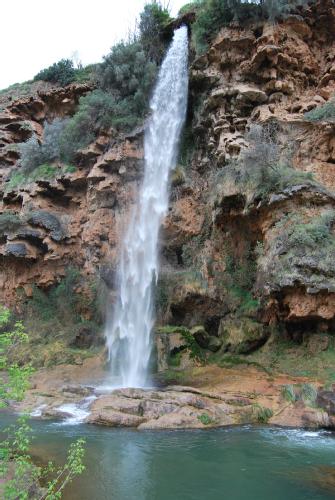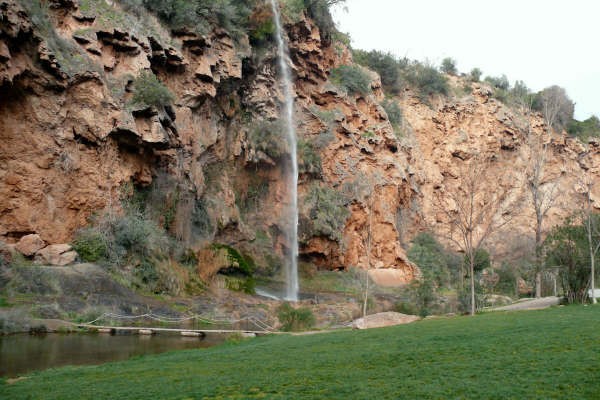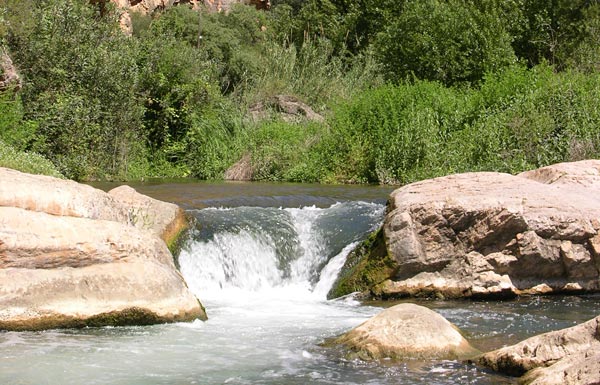 The long, white, radiant water of the Brazal waterfall drops from a ledge 30 metres high, resembling the train of a wedding dress, and falls onto the rocky banks of the Palancia River, creating one of the most hypnotising aquatic landscapes in Spain. However, calling the place the Salto de la Novia, or Bride's Jump, is not due to the waterfall, but because they used to say that brides had to jump into the river if they wanted to ensure a happy, fertile marriage. According to the legend, there was a bride who slipped when she jumped, dragging her fiancée, who was trying to help her, to the bottom of the river. As you can imagine, the wedding was called off.
The long, white, radiant water of the Brazal waterfall drops from a ledge 30 metres high, resembling the train of a wedding dress, and falls onto the rocky banks of the Palancia River, creating one of the most hypnotising aquatic landscapes in Spain. However, calling the place the Salto de la Novia, or Bride's Jump, is not due to the waterfall, but because they used to say that brides had to jump into the river if they wanted to ensure a happy, fertile marriage. According to the legend, there was a bride who slipped when she jumped, dragging her fiancée, who was trying to help her, to the bottom of the river. As you can imagine, the wedding was called off.
From the waterfall, you can see Mount Rascaña, which houses the mysterious Cueva del Reloj (clock cave). It owes its name to the pointed stone guarding its entrance and whose shadow used to show the time to the farmers who worked on the neighbouring land.
The Bride's Jump is next to Navajas, a village overflowing with fountains (many of which have medicinal mineral water) and an elm tree, planted in 1636, that is included in the Guinness Book of Records. Even older is the Altomira Tower. Built by the Arabs in the 11th century, it is in the Arab style, cylindrical and finished off with crown-shaped battlements. Located five kilometres from Navajas is the historical town of Segorbe, where, whether you are with friends or family, the cathedral and the masterpieces of Valencia Gothic art on display in the Diocesan Museum are a must-see.

A great place to eat in Segorbe is in María de Luna in the old Misericordia hospital. There is an attraction on the premises that children will love: Segóbriga Park, an aquatic park with Medieval settings. It only opens in summer, a moderately warm period because the weather in the area is mild, with pleasant temperatures all year round and infrequent rainy spells during the summer months.
